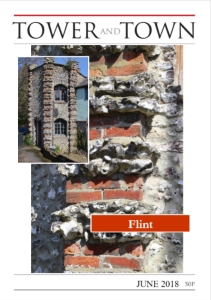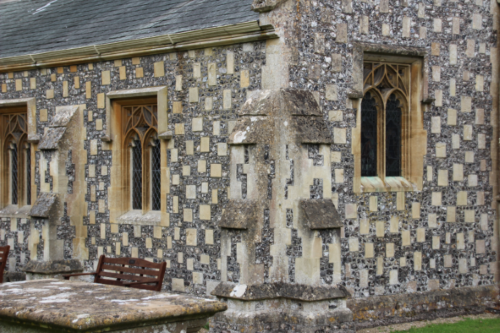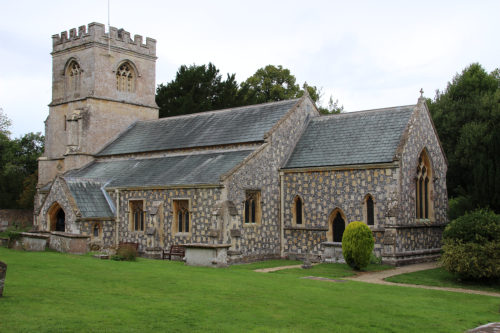

Tower and Town, June 2018 (view the full edition) (view the full edition)The Geology Of FlintWiltshire is famous for many things, Salisbury cathedral, Wadworth beer and Neolithic ruins but most especially for its churches and houses built from flint. Flint also used to be made into axes, scrapers, awls, and other tools because it is hard and leaves a sharp useful edge when broken. Flint is made of silica, (silicon dioxide, like sand) and is found in the chalk, especially in the upper parts of the rock formation. Flint is formed partly from the opaline skeleton of sponges and their fossils are commonly preserved as flint. Chalk rock itself is detritus from three main sorts of microscopic marine organisms, coccoliths, diatoms and radiolaria. Coccoliths, and the less common foraminifera (closely related to amoebae) secrete plates and shells respectively made of calcium carbonate and this makes up the bulk of the limestone rock. But when times are good for phytoplankton blooms the ooze on the sea bottom may contain a high proportion of the beautiful opaline skeletons of diatoms and radiolaria. Flinty layers may then form distinct layers in the chalk as the unstable opal breaks down into a glass-like gel. This alteration of both the microscopic silicious material and the sponge skeletons is believed to happen after the phytoplankton bloom has ended and a few additional metres of ooze have been deposited. Organic material in the ooze is slowly consumed by aerobic bacteria until all the free oxygen in the sediment is used up. Sulphate-reducing bacteria then consume the remainder liberating smelly hydrogen sulphide. This does several things, it reduces iron to iron sulphide turning the ooze temporarily black, it makes the pore water in the sediment acidic which may dissolve shells, especially those adjacent to decaying organic remains, and it provides a chemical environment that favours the precipitation of silica as flint. Sometimes this flint occupies cavities where shells have been dissolved, forming a silica cast of the carbonate original. Although flint has been used for construction it is difficult to work and walls may need stone courses for stability. Most old houses built of rock quarried from the chalk used so called "chalk rock" instead. Some of these harder limestone layers formed at a time when deposition of ooze ceased for some reason and the seabed had time to become hardened by various mechanisms. Others are normal chalk ooze with an added component, volcanic ash. The location of the volcanoes that dumped considerable quantities of ash into the chalk sea is not known but they were probably both large and quite distant. Such layers can typically be traced over much of northern Europe and recorded volcanic activity resembling that along the great African rift systems of the present day, only in this case they were associated with the episodic opening of the north Atlantic ocean. Such events began long before the deposition of the chalk, most notably in the middle of the Jurassic period, when the Fullers Earth formation was deposited. This useful deposit consists of much altered volcanic ash and may record the failed attempt of the North Sea basin to split asunder and form an arm of the north Atlantic.   Richard Clarke |